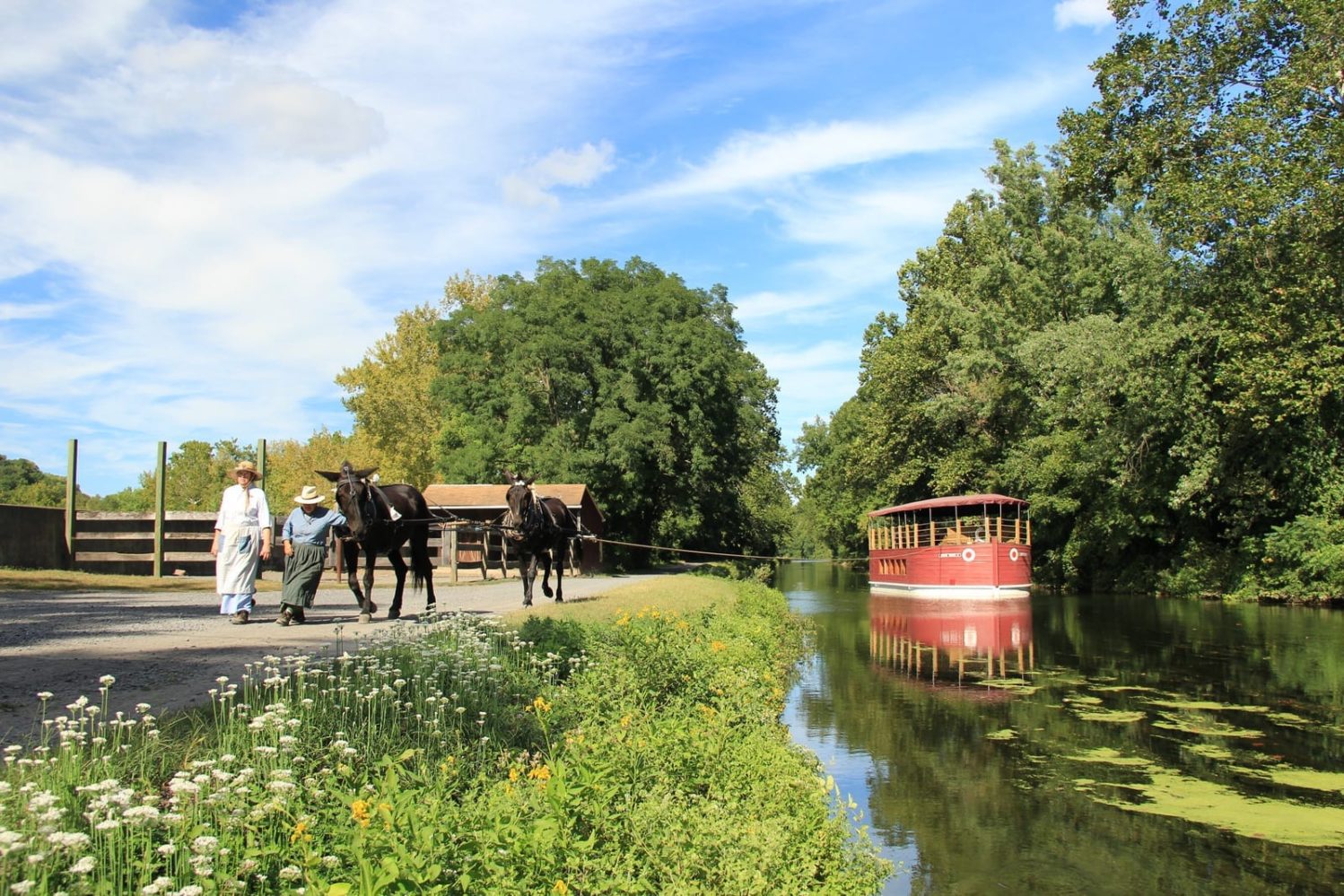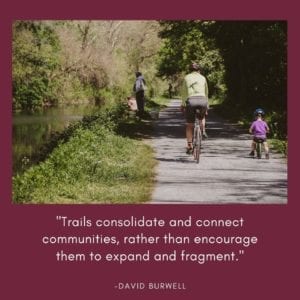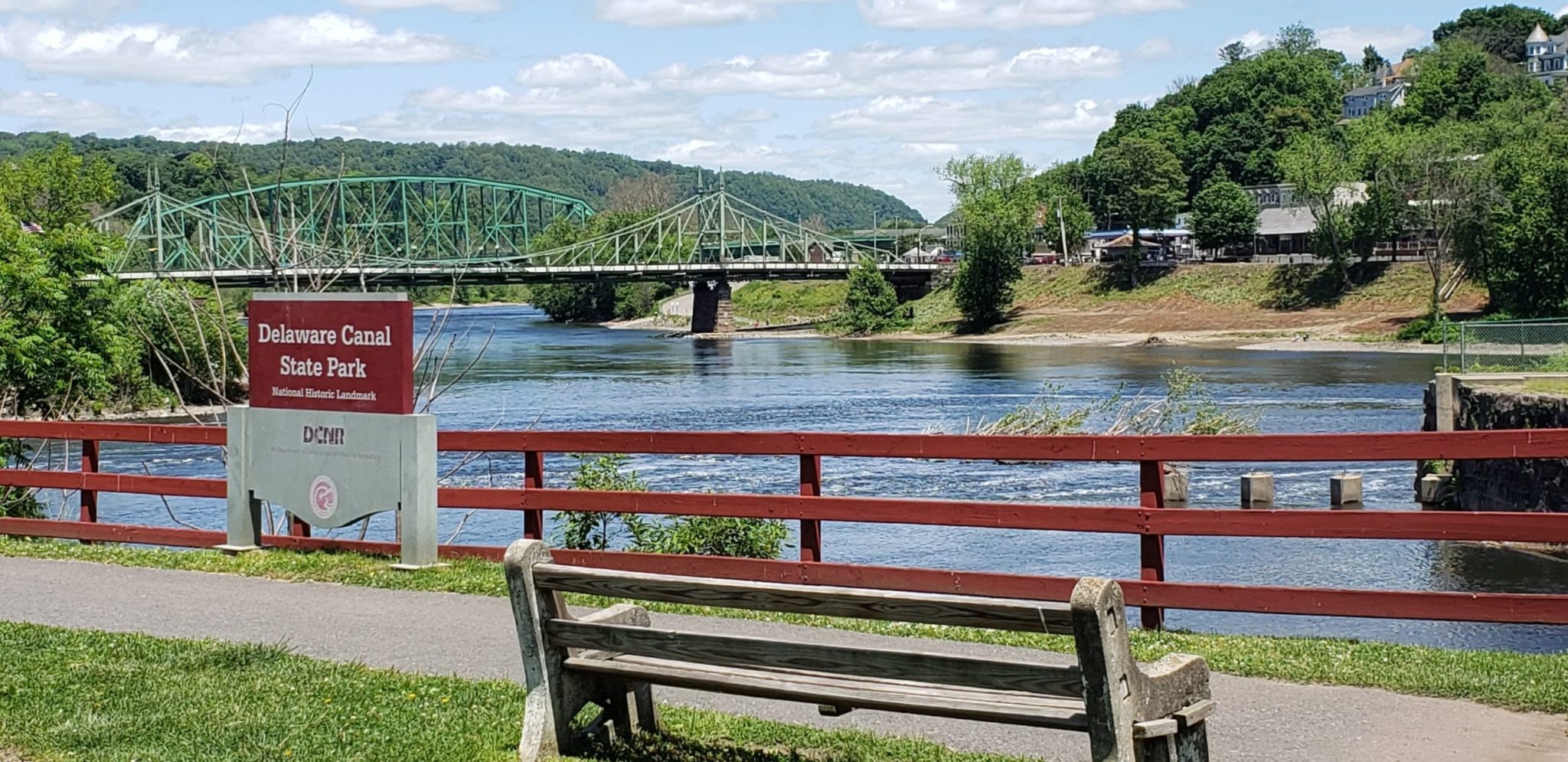When you picture an ideal sustainable community, it probably includes nature and green spaces that are easily accessible from where people live and work. One of the wonderful things about Easton is that it already has some of those features – namely a well-developed and interconnected trail and park system. Brian Greene, Director of Trails and Conservation for the Delaware & Lehigh National Heritage Corridor spoke with me about the historical significance of our trails; the benefits they provide, especially during recent months of the COVID-19 pandemic; and programs the D&L offers to expand those benefits.

A map of the trail showing completed portions, construction, and planned portions – an interactive version is available at https://delawareandlehigh.org/explore-the-corridor/map/
Easton’s trails include the Karl Stirner Arts Trail, the Two Rivers Trailway, and the 146 mile D&L Trail, which continues north to Wilkes-Barre and south to Bristol. THE LINK network encompasses these trails and others throughout the entire Lehigh Valley, “connect[ing] people to communities, nature, work, heritage, and culture.” In the vicinity of Easton, Brian describes the D&L as the spine, from which other trails branch off. These paths were originally used by the Lenni Lenape people, became important routes for coal, iron, and railroads during the Industrial Revolution, and now are places anyone can walk, roll, bike, or run to enjoy nature in a safe way. “It’s a special place for Easton,” Brian says of the D&L, “You can follow in the footsteps of history – it’s a very significant area to the history and growth of our country.”

An image from the Canal Museum in Hugh Moore Park. Photo Source: Delaware and Lehigh National Heritage Corridor
In addition to historical significance, the trails bring a wide range of other benefits. For people, being outside and being physically active have been shown to improve physical and mental/emotional health. Some utilize the trail as a means of transportation, commuting from Bethlehem to Easton or vice versa, which reduces car traffic. There are also economic benefits, as people who come to the area to use the trails buy food, patronize local bike shops, or may stay overnight at a hotel. Trails increase property values and attract new businesses to an area, because they know trails make a more desirable place for people to live and visit. The trees and green space that typically surround a trail serve as corridors for animals as well, allowing them to travel more readily from place to place as their habitats become increasingly fragmented and cut off from one another. Where trails are along rivers and streams, as the D&L is, their management can protect the riparian buffer area as well, which provides structure to the streambank and helps preserve stream health. “In general, trails bring what we call quality of life,” Brian says, “They make places better.”
Trails have proven to be “an essential part of our infrastructure” during the COVID-19 pandemic, as Brian describes. People are stressed and may feel isolated, and getting out on the D&L can provide mental/emotional health benefits and is a way to see others from a safe distance and feel connected. Brian emphasizes the importance of trails and natural places for recreation that are in our communities – not everyone can get to a national or state park, so it’s especially valuable if they can walk down the street and onto a trail. Trail counters on both the D&L and Karl Stirner Arts Trail have shown increased traffic since February and March. While almost everything is closed (though the region is gradually reopening), trails are still open, and people have certainly been utilizing them.
The D&L National Heritage Corridor is a nonprofit organization that plays a key role in bringing the full benefits of the trail to the local community both during a pandemic and under more ordinary circumstances. While they don’t own any piece of the trail, they partner with over 20 different land owners to help manage it. Several programs encourage people to get on the trail – Trail Tenders are volunteers who go out to maintain and clean up the trail, and the Get Your Tail on the Trail program creates mileage challenges, public events, and prizes for outdoor exercise. The D&L Heritage Half Marathon also takes place each fall and directly benefits the D&L Trail. Anyone interested in supporting the D&L’s efforts can find a variety of ways to contribute on their website.
When I asked Brian what role he would ideally like to see the trails play in 10 years, he responded, “I would like people to view trails as an essential part of the community – we need schools, jobs, roads, businesses, and I want trails in that same breath. I want everyone to say their favorite part of living in Easton is our trail network.” Brian and the rest of the D&L National Heritage Corridor team’s continued work seeks to make that vision a reality, bringing the quality of life benefits of trails to more and more people throughout the Lehigh Valley region.


